1880's/1920's/2000's
Labels: The Modern World
I'm an urbanist, in love with cities. I'm also a real estate agent in Los Angeles. My "beat" includes West Adams and environs, Midtown, the Echo Park empire, and the Northeast; most of L.A.'s oldest neighborhoods, several in transition, and many with undeserved reputations.
Labels: The Modern World
Labels: The Modern World
Labels: The Modern World
Labels: The Modern World
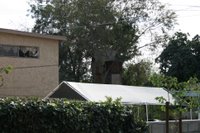 In real estate dream #4a, I'm staging a tree house, with bakelite radio and army issue binoculars, mosquito netting, maps of the Ubangi River, and a dog eared copy of Lord Jim, or The Swiss Family Robinson.
In real estate dream #4a, I'm staging a tree house, with bakelite radio and army issue binoculars, mosquito netting, maps of the Ubangi River, and a dog eared copy of Lord Jim, or The Swiss Family Robinson.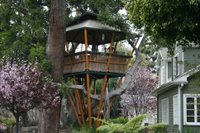 Some arboreal structures are cobbled together from partial sheets of ply and builders waste (see top). Others employ fine finish materials, inspired by fantastical architectural, or the tree dwelling tribes of New Guinea.
Some arboreal structures are cobbled together from partial sheets of ply and builders waste (see top). Others employ fine finish materials, inspired by fantastical architectural, or the tree dwelling tribes of New Guinea.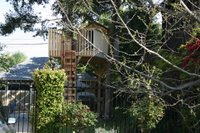 Pitchford Estate in Shropshire County England claims the oldest extant tree house, believed to date from at least 1692.
Pitchford Estate in Shropshire County England claims the oldest extant tree house, believed to date from at least 1692. But while constructing a woodsy roost used to be a rite of passage, chief staging for hideouts, secret clubs, and sleep overs, the pre-fab play structure seems to have commandeered the kiddie commorancy niche.
But while constructing a woodsy roost used to be a rite of passage, chief staging for hideouts, secret clubs, and sleep overs, the pre-fab play structure seems to have commandeered the kiddie commorancy niche.Labels: The Modern World
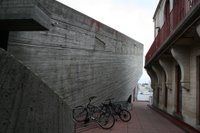 (See Not So Smart Buildings Part 1 from 10/29/08)
(See Not So Smart Buildings Part 1 from 10/29/08)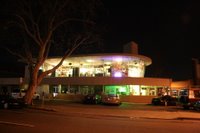 much/I need a simpler palette."
much/I need a simpler palette."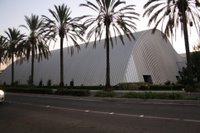 building and design is likely, typically, a response to preceding movements, the playful, sometimes cloying, affectations of post-modernism, and the excessive structural pursuits of computer age architecture.
building and design is likely, typically, a response to preceding movements, the playful, sometimes cloying, affectations of post-modernism, and the excessive structural pursuits of computer age architecture.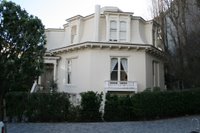 ideologically astern.
ideologically astern.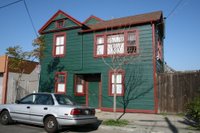 Ironically, the era recalled eschewed historical precedents and references, and sought to formulate new concepts of form and space. The revival amounts to sincere appreciation, nostalgia, marketing snap, and cyclicity. The revival is, at times, pure cliche.
Ironically, the era recalled eschewed historical precedents and references, and sought to formulate new concepts of form and space. The revival amounts to sincere appreciation, nostalgia, marketing snap, and cyclicity. The revival is, at times, pure cliche.Labels: The Modern World
 I'll not revisit my billboard rants, complaints about the scenery scarring effects, the new, intrusive light boxes, L.A.'s pitiful regulation. But I will tiptoe outside my usual bounds.
I'll not revisit my billboard rants, complaints about the scenery scarring effects, the new, intrusive light boxes, L.A.'s pitiful regulation. But I will tiptoe outside my usual bounds.Labels: The Modern World
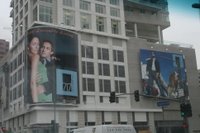 As some seek to connect spiking fuel prices with housing market woes, others wonder if my real estate beat, hard-headedly fixed on the "old core" or "the early sprawl," is awash with petrol refugees, exurban escapees, eager to swap Victorville for Vermont Knolls, Frazier Park for Jefferson Park, and Westlake for Westlake.
As some seek to connect spiking fuel prices with housing market woes, others wonder if my real estate beat, hard-headedly fixed on the "old core" or "the early sprawl," is awash with petrol refugees, exurban escapees, eager to swap Victorville for Vermont Knolls, Frazier Park for Jefferson Park, and Westlake for Westlake. than others, unevenly, with less value lost at the high end; though, I'm not sure if the "urban pioneer movement" (as it insultingly came to be known in the 1980's) is occupied with birthing breath, or on the verge of a lung expanding second wind. Maybe even revolutions respect the repose of the place.
than others, unevenly, with less value lost at the high end; though, I'm not sure if the "urban pioneer movement" (as it insultingly came to be known in the 1980's) is occupied with birthing breath, or on the verge of a lung expanding second wind. Maybe even revolutions respect the repose of the place.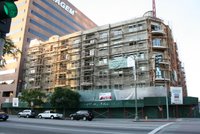 burg. Unappetizing retail still disappoints some, while the coming Expo Line and LA Live projects are billed as difference makers.
burg. Unappetizing retail still disappoints some, while the coming Expo Line and LA Live projects are billed as difference makers.Labels: The Modern World
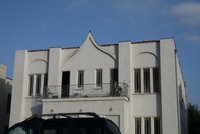 I was racing down Hauser when this apartment building caused the breaks on my truck to lock. Since I don't know how to do the Toyko Drift, I instead settled for a tire shredding screetch, and poorly composed photo.
I was racing down Hauser when this apartment building caused the breaks on my truck to lock. Since I don't know how to do the Toyko Drift, I instead settled for a tire shredding screetch, and poorly composed photo.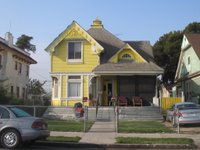 bellowed as I sped away.
bellowed as I sped away.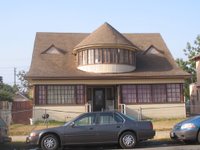 perhaps for deportation purposes. "I'm photographing turrets," I'll offer disarmingly (then show other images in the camera memory). Sometimes I tender my card, in a gesture people accept as legitimizing. "If you'd ever feel comfortable letting me in, I'd love to see the interior," I've asked.
perhaps for deportation purposes. "I'm photographing turrets," I'll offer disarmingly (then show other images in the camera memory). Sometimes I tender my card, in a gesture people accept as legitimizing. "If you'd ever feel comfortable letting me in, I'd love to see the interior," I've asked.Labels: The Modern World
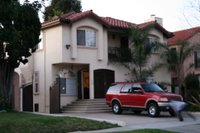 Los Angeles, frequently billed as the swami of decentralization, continues to become more dense, now the 8th densest big city in America, leap-frogging Baltimore and Minneapolis. More pointedly, of the ten most populous U.S. cities, LA ranks fourth in persons per square mile, trailing only New York, Chicago, and Philadelphia.
Los Angeles, frequently billed as the swami of decentralization, continues to become more dense, now the 8th densest big city in America, leap-frogging Baltimore and Minneapolis. More pointedly, of the ten most populous U.S. cities, LA ranks fourth in persons per square mile, trailing only New York, Chicago, and Philadelphia.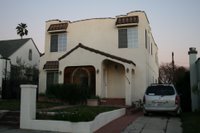 McMansions are frequently the end yield of teardowns. They are homes assembled from mass produced parts, with stock plans often used to reduce costs, an artless assemblage of borrowed signifiers, cheesy Mediterranean revival elements paired with colonial kitsch.
McMansions are frequently the end yield of teardowns. They are homes assembled from mass produced parts, with stock plans often used to reduce costs, an artless assemblage of borrowed signifiers, cheesy Mediterranean revival elements paired with colonial kitsch.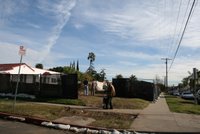 The free world's 21st century version of ruinous 1950's-60's era urban renewal, destroying cohesiveness in the name of progress, like the terrible fabric discarding re-muddles that transform L.A.'s great early housing stock into the next blight.
The free world's 21st century version of ruinous 1950's-60's era urban renewal, destroying cohesiveness in the name of progress, like the terrible fabric discarding re-muddles that transform L.A.'s great early housing stock into the next blight.Labels: The Modern World
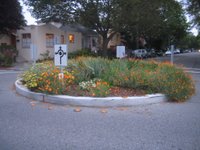
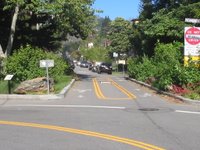 by other cities, notably Berkeley (see images), I'd favor significantly more street closures along/perpendicular to major thoroughfares. Support among community groups would be high, in praise of the insulating value of the cul-de-sac.
by other cities, notably Berkeley (see images), I'd favor significantly more street closures along/perpendicular to major thoroughfares. Support among community groups would be high, in praise of the insulating value of the cul-de-sac.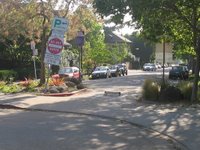 I'd likely impose a commuter tax too, ala Philadelphia, and not a payroll expense tax. How about a tax on drive-thru's? I'd go tax crazy! The power is corrupting already! Seriously, I think the citizens of Los Angeles will pay for demonstrable capital improvements. It's easier to sell people stuff they can see and use.
I'd likely impose a commuter tax too, ala Philadelphia, and not a payroll expense tax. How about a tax on drive-thru's? I'd go tax crazy! The power is corrupting already! Seriously, I think the citizens of Los Angeles will pay for demonstrable capital improvements. It's easier to sell people stuff they can see and use.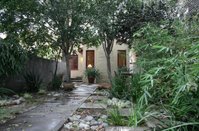 February 17th) from 1 - 4:30 pm. The property is located nearly one block East of Arlington, on the North side of the street.
February 17th) from 1 - 4:30 pm. The property is located nearly one block East of Arlington, on the North side of the street.Labels: The Modern World
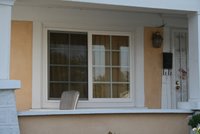
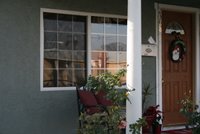 Depressingly, conformity is generally hand-cuffed to mass production and "affordability". Manufacturing prowess marketed as progress, deus ex machina, all that jive talk.
Depressingly, conformity is generally hand-cuffed to mass production and "affordability". Manufacturing prowess marketed as progress, deus ex machina, all that jive talk.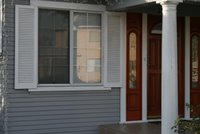 Still if it were about plain utility, the waxy, band aid muntins would take a hike, 'cause divided lights read "stylish".
Still if it were about plain utility, the waxy, band aid muntins would take a hike, 'cause divided lights read "stylish".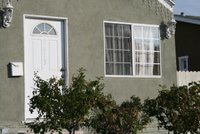
Labels: The Modern World
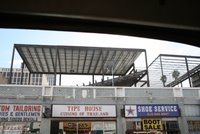
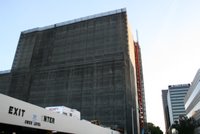 Suburbs comments), the United States has long held an anti-urban bias, freely associating the city (as opposed to the rural or suburb) with moral and social ruin (the impact of ever more intensive urbanization and immigrant tensions). This association may finally be kaput, steamrolled by the interest of builders, a full, mature generation of suburban expats, and an era of remarkable urban safety.
Suburbs comments), the United States has long held an anti-urban bias, freely associating the city (as opposed to the rural or suburb) with moral and social ruin (the impact of ever more intensive urbanization and immigrant tensions). This association may finally be kaput, steamrolled by the interest of builders, a full, mature generation of suburban expats, and an era of remarkable urban safety.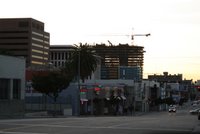 The 1950's status image of cookouts, huge, glistening slabs of meat, cocktails and a backyard putting green has been replaced by another developer led mirage: burghal immediacy, cosmopolita, laptops, a universe of sexy singles (albeit in office inappropriate clothing), and faux fro-yo, or what I call "cutsie commerce".
The 1950's status image of cookouts, huge, glistening slabs of meat, cocktails and a backyard putting green has been replaced by another developer led mirage: burghal immediacy, cosmopolita, laptops, a universe of sexy singles (albeit in office inappropriate clothing), and faux fro-yo, or what I call "cutsie commerce".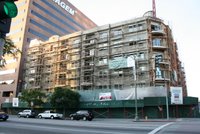 20th century model, into the next overstuffed Gotham.
20th century model, into the next overstuffed Gotham.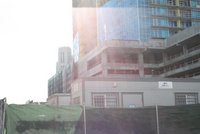 This isn't Nimby-esqe gatekeeping, rather a question of asset management. Is Los Angeles losing herself, her essence, to subsidize the growth machine? Hoarding the financial frankfurter while Flint, Gary, and Buffalo starve?
This isn't Nimby-esqe gatekeeping, rather a question of asset management. Is Los Angeles losing herself, her essence, to subsidize the growth machine? Hoarding the financial frankfurter while Flint, Gary, and Buffalo starve?Labels: The Modern World
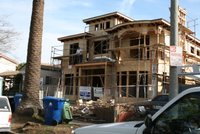
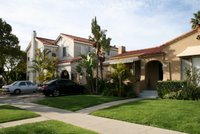 Twenty years ago I worked as a furniture mover, for a small mom and pop operation in Oakland. My boss had clients he'd relocated five and six times, houses he'd visited over and over again. In the early 1980's he claimed the average property contained twice the volume (of possessions) as in 1950. A mere anecdote, yet the storage industry--unheard of thirty years ago, and once the provenance of moving companies--is now a $20 billion a year enterprise. Americans hoard so much crappola that it's consumed their attics, basements, garages, and now has to be stored off-site as well. For many, the solution is to build a bigger home, a much bigger home.
Twenty years ago I worked as a furniture mover, for a small mom and pop operation in Oakland. My boss had clients he'd relocated five and six times, houses he'd visited over and over again. In the early 1980's he claimed the average property contained twice the volume (of possessions) as in 1950. A mere anecdote, yet the storage industry--unheard of thirty years ago, and once the provenance of moving companies--is now a $20 billion a year enterprise. Americans hoard so much crappola that it's consumed their attics, basements, garages, and now has to be stored off-site as well. For many, the solution is to build a bigger home, a much bigger home.Labels: The Modern World
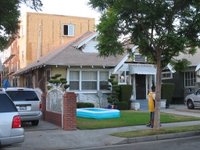 Cowardly, a study was requested concerning economic impacts. But how can such a thing be quantified? How do you calculate the value added by a massive re-do, and the corresponding value loss for the encumbered adjoining property?
Cowardly, a study was requested concerning economic impacts. But how can such a thing be quantified? How do you calculate the value added by a massive re-do, and the corresponding value loss for the encumbered adjoining property?Labels: The Modern World
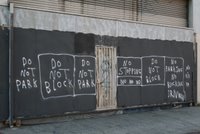 What I've wanted to add, for the longest time, probably inappropriately is, "safe unlike those places outside city centers. You know, the places with the mass-killings." Leaving Virginia Tech out, because college campus craziness is a category onto itself, and yesterday's dire news in Omaha, we're still left with the Amish classroom tragedy, Columbine, the Tacoma Mall, Wakefield, Red Lake High, the Honolulu Xerox repair manhunt, the San Ysidro McDonald's massacre, and others. None of which involved "negro stick-up men", Crips, Bloods, La eMe, or rap-star posses.
What I've wanted to add, for the longest time, probably inappropriately is, "safe unlike those places outside city centers. You know, the places with the mass-killings." Leaving Virginia Tech out, because college campus craziness is a category onto itself, and yesterday's dire news in Omaha, we're still left with the Amish classroom tragedy, Columbine, the Tacoma Mall, Wakefield, Red Lake High, the Honolulu Xerox repair manhunt, the San Ysidro McDonald's massacre, and others. None of which involved "negro stick-up men", Crips, Bloods, La eMe, or rap-star posses.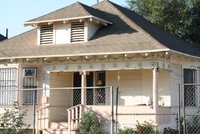 In El Pueblo stories abound of terrified outsiders, begging off dinner invitations and asking for escorts to the driveway on account of a graffiti scrawl three blocks away, avoiding the 110 freeway lest car trouble require surface street interaction, and mistaking film shoot pyrotechnics for street gang warfare. Probably fueled by yellow media, some legitimate hardships, and big screen depictions like Keven Kline's near car-jacking in Lawrence Kasdan's bromidic Grand Canyon.
In El Pueblo stories abound of terrified outsiders, begging off dinner invitations and asking for escorts to the driveway on account of a graffiti scrawl three blocks away, avoiding the 110 freeway lest car trouble require surface street interaction, and mistaking film shoot pyrotechnics for street gang warfare. Probably fueled by yellow media, some legitimate hardships, and big screen depictions like Keven Kline's near car-jacking in Lawrence Kasdan's bromidic Grand Canyon.Labels: The Modern World